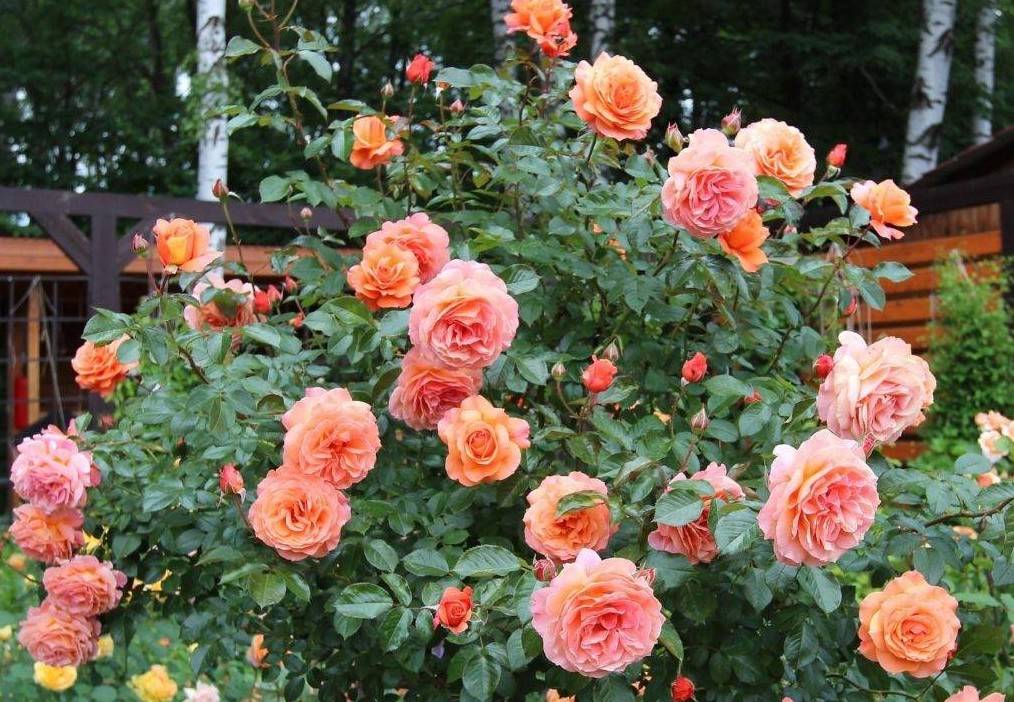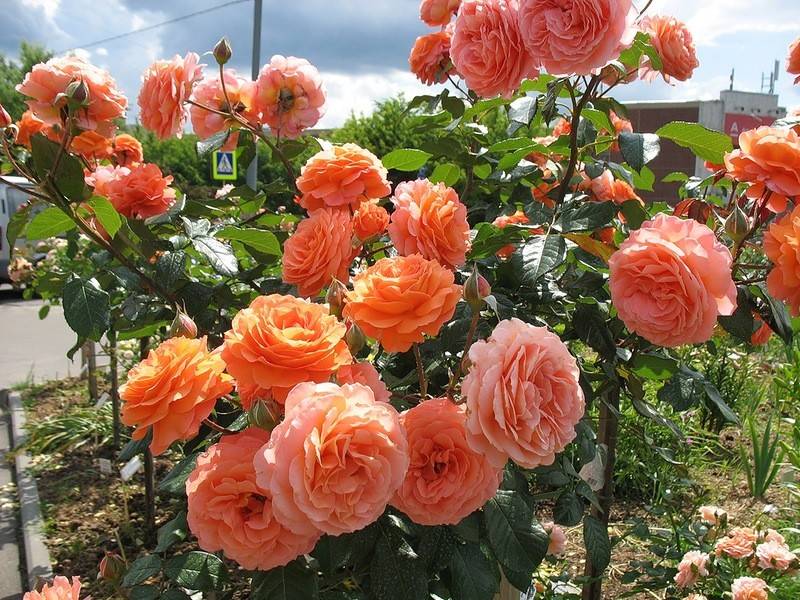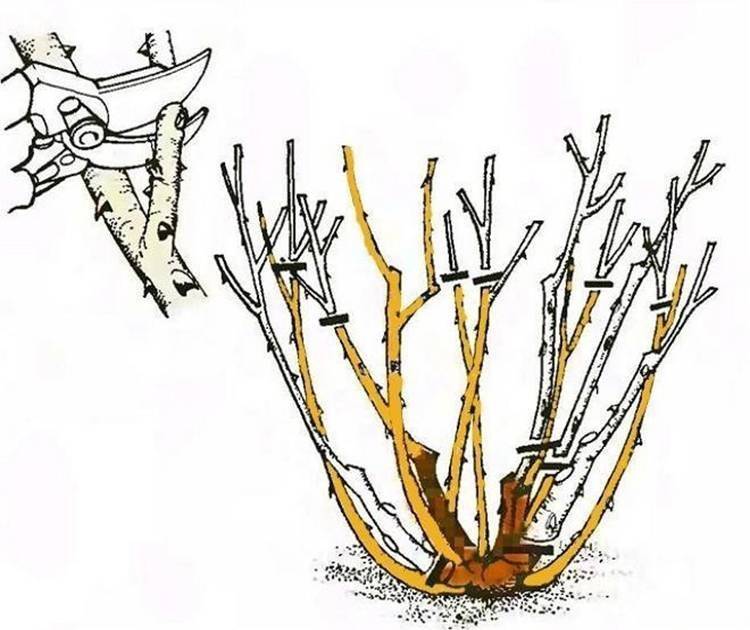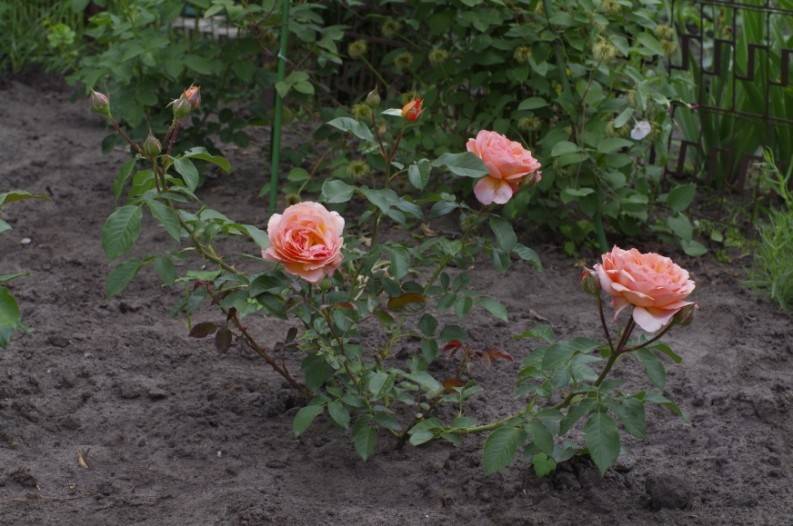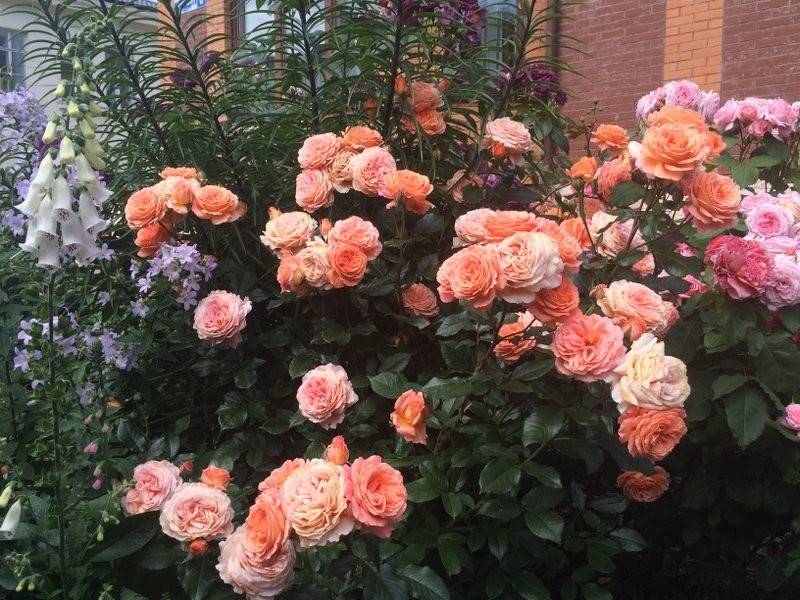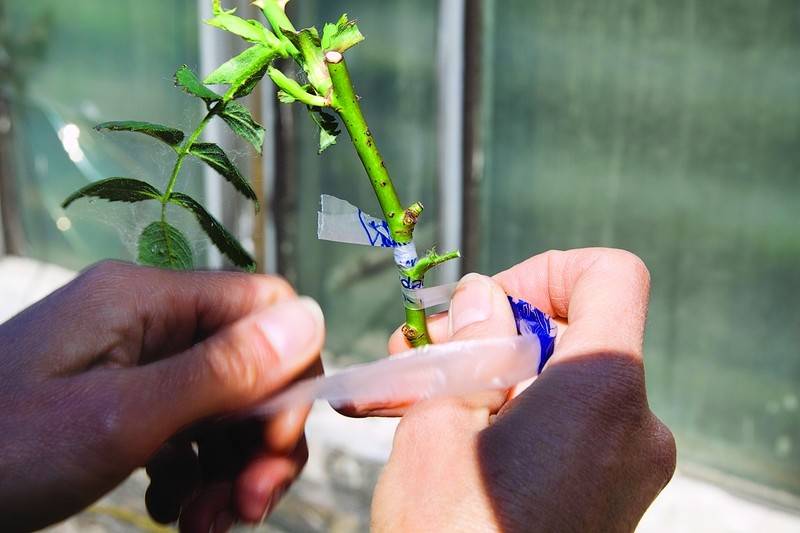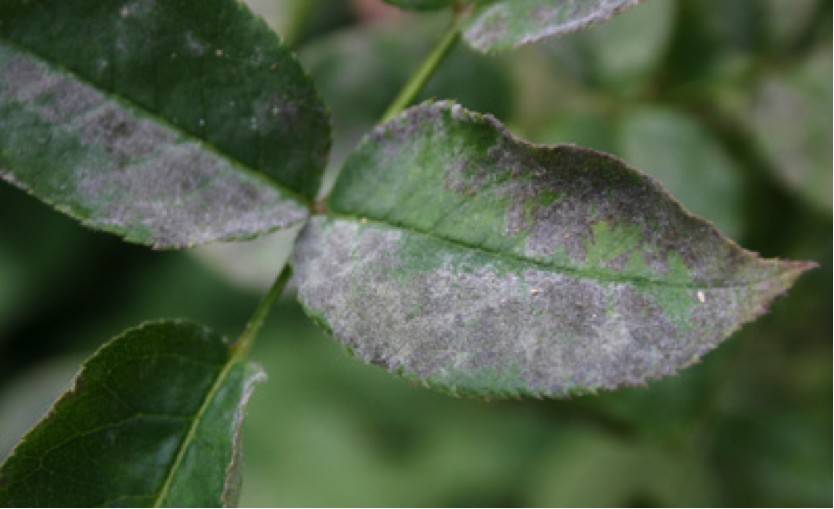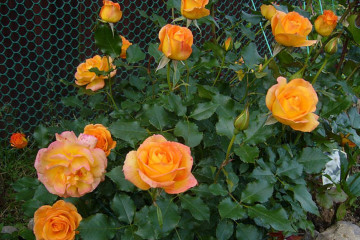Rose Belvedere (Belvedere) - description and characteristics
Content:
Rose scrub Belvedere belongs to hybrid tea. The variety was bred in 1996 by the German breeder Hans Jürgen Evers and won the hearts of many gardeners. Translated from Italian, the name Belvedere means "beautiful view". This is the name for light glazed superstructures on buildings, as well as small gazebos and pavilions.
Rose Belvedere (Belvedere) - what kind of variety, history of creation
Rose Belvedere (Belvedere) has a pleasant color and smell, which is why it can often be found in gardens. An unassuming flower can grow even in Siberia, which significantly increases its popularity against the background of other varieties of rose bushes.
Brief description, characteristic
A bush rose can reach a height of 1.5 m and a width of 1.2 m. The buds have a delicate color, under different lighting they can appear both orange and pink. Flowers reach 12 cm in a loose state. The bud contains about 30 petals with wavy edges. The inflorescences consist of 5 round flowers. Single buds can also occur. Medium-sized, dark green glossy leaves.
Advantages and disadvantages of the variety
Rose Belvedere has a number of advantages over other varieties:
- ease of care;
- endurance;
- early and long flowering;
- easy survival;
- relative resistance to frost.
Despite such a large description of the positive traits of the flower, it also has some disadvantages in comparison with other varieties. Low resistance to some diseases can be considered as one of the main ones. It is also not recommended to keep the flower in direct sunlight, as they can damage the delicate petals.
Use in landscape design
The Belvedere rose is relatively small in size, and therefore it is recommended to put it forward on the site, at least, to the middle plan. It looks good next to curbs in combination with small shrubs.
Growing a flower, how to plant it in open ground
Rose Belvedere does not belong to the category of capricious flowers, and therefore planting can even be carried out by a novice gardener. Subject to certain recommendations for growing and caring for the plant, it will delight with long flowering from year to year.
In what form is the planting carried out (by seeds, seedlings, etc.)
Planting can be carried out with seedlings, cuttings, grafts. Distribution received a vegetative method of reproduction, since in this case it is easy to grow a full-fledged rose bush from a bouquet.With this method, cuttings can be prepared in a large number, while all varietal characteristics will be preserved.
What time is the boarding
The Belvedere hybrid tea rose can be planted outdoors in spring, autumn and summer. It is recommended to choose the right location, prepare the soil and seedling so that the rose takes root before the onset of cold weather. Do not bloom in the first year.
Location selection
Choosing the right location will prevent the possibility of not blooming. Do not try to grow in a swampy area. With a strong waterlogging of the soil, the rose can get sick with black spot. Groundwater should be at least 1 m to the surface of the earth.
How to prepare the soil and flower for planting
Loamy soil is the most suitable option for planting Belvedere. For its preparation, it is worth taking 3 parts of sand, one part each of sod land, compost and humus. You can use vermicompost instead of the last three ingredients, which will only improve the result. It is recommended to soak the seedling in a root formation accelerator solution for 24 hours before planting.
Planting procedure step by step
The planting procedure is quite simple and differs little from other varieties of roses. You need to perform the following steps step by step:
- Dig a hole 60 cm deep and about 50 cm in diameter.
- Lay out drainage on the bottom, which can be used as small stones and crushed stone. The layer should not be more than 10 cm.
- Add humus or compost.
- Cover the garden soil with a slide.
- Gently holding, place the seedling on a mound, spreading the roots. The root collar should be deepened into the ground so that the bush will stretch out more.
- Drizzle.
You should be more careful with the root system so as not to damage it.
Plant care
Even if the flower is not capricious, it still needs the attention of a grower. You need to know a number of recommendations that will help keep the shrub healthy and wait for it to bloom.
Watering rules and humidity
Watering should be carried out with warm well-settled water in an amount of about 1 bucket. It needs to be poured at the root, preventing drops from falling on the leaves. It is also recommended to loosen the soil the next day after watering to improve aeration.
The plant is considered drought tolerant. The rose is less resistant to fungal diseases that appear with high humidity and soil.
Top dressing and soil quality
The rose grows best in fertile, drained soil, the acidity of which is in the range of 5.5-6.5 pH. The flower can grow on poor soils, however, in such conditions, growth will be slower, and the height of the bush will not exceed 1 meter.
You need to fertilize the plant on time: in the spring it is worth adding copper sulfate first, and then nitrogen. In the summer, it is necessary to use top dressing with a high content of phosphorus and calcium, and in the fall - potassium.
Pruning and replanting
Particular attention should be paid to spring pruning. During the procedure, you need to leave about 4-5 strong stems with 8 buds each. It is better to remove damaged and weakened shoots so that the scrub does not waste energy on them. It is worth shortening the plant height to 40 cm. Transplants are made every 3 years.
Features of wintering a flower
Preparation for the winter period is mandatory, because despite the frost resistance indicated in the description, the Belvedere cannot cope without additional help. It is recommended to start by removing weeds and loosening the soil to increase its air permeability.
Spruce branches should be laid out next to the bush. Tall stems must be pulled to the ground and reinforced with wire and special corners. They should lie on a previously prepared substrate. Do not allow some branches to touch the ground, as it may be wet, which will cause rotting, or the stems will begin to freeze more.
Above it is worth installing a frame on which the covering material is laid. The structure is covered with earth. In April-May, you can start airing by opening the film from the sides.
Blooming rose
As the bud opens, the bright orange color changes to pale peach. Scrub is a re-flowering variety, although the second wave looks less impressive. The old-fashioned buds are tightly stuffed with petals.
A period of activity and rest
The flowering period is long, the first wave begins in the middle of summer, the second at the end. The timing differs depending on the quality of the introduced top dressing, as well as on the conditions in which it grows.
Care during and after flowering
During flowering, the Belvedere expends a lot of energy, so the gardener must help the plant and take special care. The bushes should be treated against pests and diseases, introduced into the soil, fertilizing that stimulates the ovary, and watered on time and abundantly, preventing the soil from drying out. When the buds have faded, they need to be cut off so that future inflorescences form faster.
What to do if it does not bloom, possible reasons
There are several reasons why flowering does not start:
- wrong location on the site (swampy soil, shady place);
- improper pruning (too much cut shoots can only form by the end of summer);
- irregular watering (it should be abundant, but rare);
- improper feeding (nitrogen helps to build up vegetative mass, and this is required only in spring, but not all year).
It is necessary to familiarize yourself with the rules of proper plant care so that flowering begins on time.
Flower propagation
Reproduction of a flower is also quite simple, and therefore anyone can cope with it. Most often, the cultivation of the plant is practiced by layering, grafting, seedlings and cuttings. The seed method is the most labor-intensive, and therefore not used.
When is it produced
Propagation by cuttings can be carried out at any time of the year, with the exception of winter. If the cuttings have not been used on time, they can be left in a cool place for the winter to be planted next spring.
Detailed description
Cut the cuttings with a clean, disinfected garden knife. Their length is about 15 cm. Each branch should have at least 2 buds. Rooting is carried out in the following way:
- The substrate should be disinfected and placed in a container.
- Place the cuttings in a growth stimulator for a day.
- Plant in the ground, deepening by 1 kidney at an angle of 45 degrees.
- Water, put the container in the greenhouse or cover with plastic wrap.
When the root system is well developed, the seedlings can be transplanted into open ground.
Diseases, pests and ways to control them
The plant is susceptible to fungal infections, which is its main disadvantage. It is easier to carry out preventive measures than rose treatment. It is recommended to spray the plant with antifungal drugs several times during the period of activity. To prevent the appearance of pests, you should use insecticides.
Shrub Belvedere can decorate any site.It is not recommended to bring it to the front, since often the lower leaves fall off and a bare stem remains, however, this can be beaten in a certain way. Most often, the rose is planted next to low herbaceous plants, against which the bright orange buds of the Belvedere look especially advantageous.

